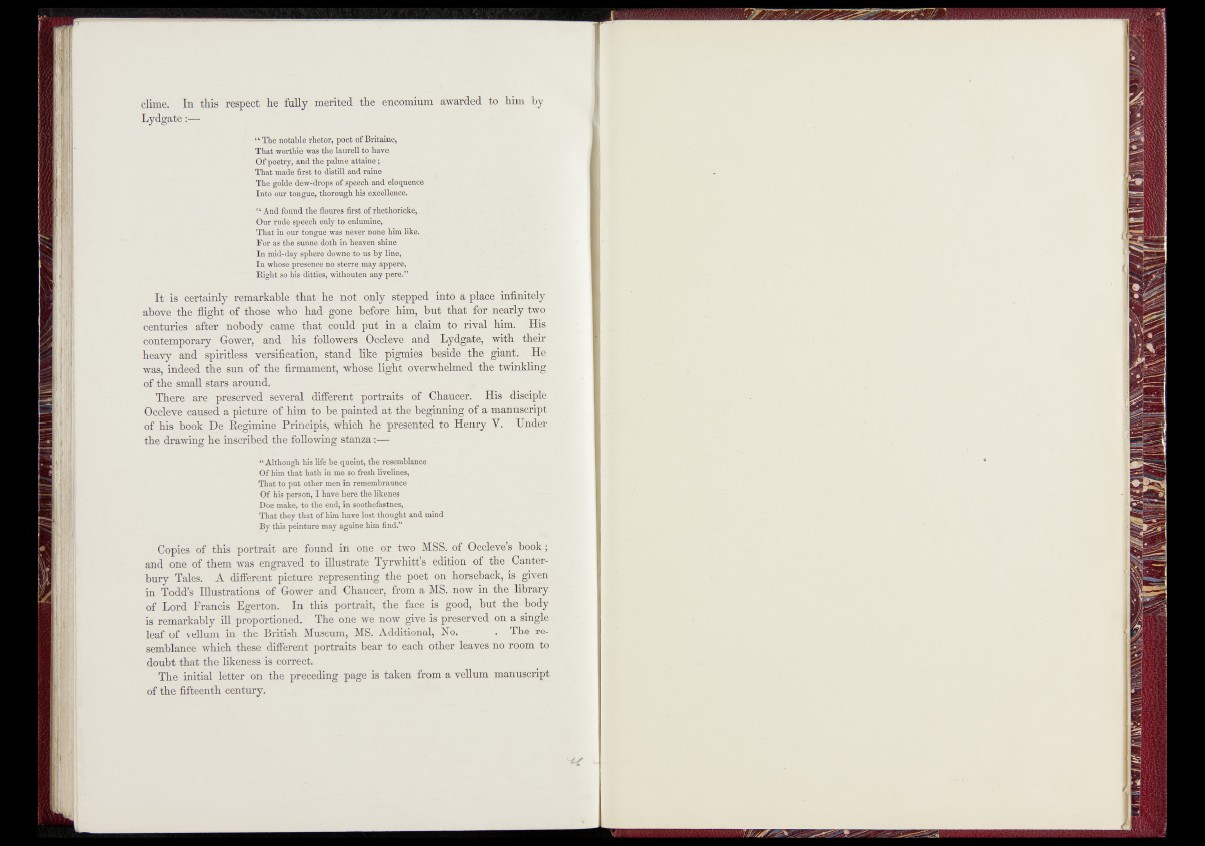
clime. In this respect he folly merited the -encomium awarded to h im »
Lydgate:—
“ Th^'notetlejrhetor, poet of Britaine,
THat-worthie was tiieJaui^.iojhavb .
Of poetry, and the palme attaine;
That made first to distilt and r£me __ -
The golde dew-drops of speech and eloquence
Into our tongue, thorough his excellence.
“ And found the floures^first of rhethoricke, ,
Our rude speech only-to e n fi^ n g i'i^
That in our tongue was never none him like.,,
For as the aunne doth in heaven shine
'Tn mid- day sphere downe'tp^usiSy line,
In whose presence no sterre may appere,
Right so Sis ditties, withonten any pere.”
It is certainly remarkable that he not. only stepped into a place infinitely
above the flight of those who had gone' before him, but that for nearly two
centuries after nobody came that could put in a daim to rival" Bin. His
contemporary Gower, and his followers Ocdeve and Lydgate, with theiri
heavy and spiritless versification^ stand dike pigmies beside the giant. 'He
was, indeed the sun of the firmament, whose light overwhelmed the twinkling
of the small stars around.
There are preserved several different portraits of Chaucer." His .disi i f c
Occleve caused a picture of him to bejjamted afe.the Mgiup|i|g r'm a n u s c rip t
of liis book De Regimine Principis, which he presented'to Henry V. Uhder
the drawing he inscribed the following stanza
“ Although his life be queint, the resemblance
Of him that hath in mo so fresh livdmes, y
That to put other men in rcmembraunce
Of his person, I have here the likenes__
.. Doe make, to the end, in soothefastnes, -
- That they that o f lam havé lost thought and mipd -
By this peinture may againe him find?
Copies of this portrait are' found in one or two MSS. of Occlev^wo.ok.;.^
and one of them was engraved to illustrate Tyrwhitt’s edition of the Canterbury
Tales. A different picture representing the poet on horseback, is given
in Todd’s Illustrations of Gower and Chaucer, from a MS. now iü the librax^
of Lord Francis Egerton. In this portrait, the face is good,., but the-body
is remarkably ill proportioned. The one we now give is preserved on a single
leaf of vellum in the British Museum, MS. Additional, No. . . The resemblance
which these different portraits bear to each other leaves no room to
doubt that the likeness is correct.
The initial letter on the preceding page is taken from a vellum manuscript
of the fifteenth century.